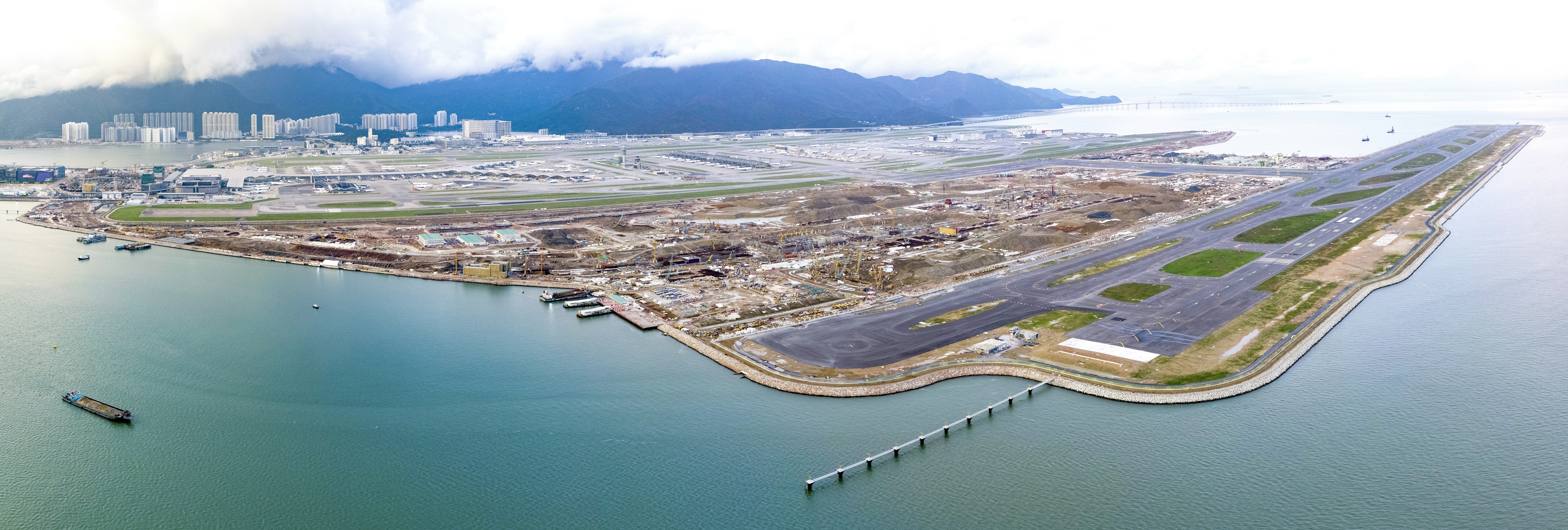Enhancing Marine Ecology and Promoting Sustainable Fisheries
In its continuous efforts to enrich the marine ecology and fisheries of Hong Kong, the Marine Ecology Enhancement Fund (MEEF) and the Fisheries Enhancement Fund (FEF) have funded two initiatives in promoting the local sustainable aquaculture industry and protecting cetaceans in Hong Kong waters.
To promote the diversity and sustainability of Hong Kong’s aquaculture industry, the FEF funded a project by Hong Kong Agricultural Products Technology Research Limited for Australian redclaw crayfish (hereinafter referred to as “redclaw crayfish”) farming. Redclaw crayfish grow rapidly and have strong disease resistance, which are suitable for the high-density indoor aquaculture.

With an initial purchase of about 2 000 crayfish larvae, the project team set up pilot farming systems in an industrial building in Kowloon Bay to study ideal breeding and cost-effective conditions through the use of recirculating aquaculture systems since July 2019. The latest findings revealed that the application of recirculating aquaculture systems can reduce the consumption of water and electricity for redclaw crayfish farming; while the crayfish have a survival rate of 50% to 80%, depending on the pond’s density, and that water depth does not have a tangible effect on survival rate. These redclaw crayfish grow through the process of molting, and the team discovered that shallower water (water depth of 0.2 metres) and the use of independent modified plastic box for each redclaw crayfish allow for a better molting rate and therefore a better growth rate.



To promote this knowledge, the team is planning to develop local crustacean aquaculture manuals and videos for the industry, which is expected to benefit about 100 fishermen. With the promotion of the modern fishery technology, it is also expected to attract freshmen to join the industry, especially the younger generation.
As for the MEEF, it has funded two multi-year projects by City University of Hong Kong that focuses on stranded cetaceans in Hong Kong waters and a forensic investigation into the causes of their injury and death. As the world’s first group applying virtopsy (post-mortem imaging) into stranding investigation, the team uses 3D models from virtopsy for the characterisation and determination of the biological health and profiles of these majestic mammals, including Chinese white dolphins and finless porpoises. Ultimately, the aim is to facilitate related government departments and stakeholders to formulate an effective management plan of cetaceans in Hong Kong waters.

From July 2017 to March 2020, the team performed virtopsy on about 80% of the stranded cetaceans found in Hong Kong waters. The team has increased the diagnostic accuracy and created a web-based database for these mammals’ biological health and profiles. The research outcome has been shared with scholars and relevant government departments, and with the public through outreach activities at the Hong Kong Science Museum.
The team will continue to study the cetacean population and facilitate the formulation of effective injury prevention plans for local cetaceans.
Other Updates
-
The Third Runway at Hong Kong International Airport Commissions
25/11/2022
-
Flights Land on Third Runway as Operation Familiarisation Commences
08/07/2022
-
Operation Familiarisation of Third Runway from 8 July 2022
02/07/2022
-
Aerodrome Licence for AAHK to Operate HKIA Renewed to Include Third Runway
31/05/2022
-
Aircraft Crash and Rescue Exercise Conducted on the Third Runway
24/05/2022
-
Third Runway Readiness Reaches Milestone
21/04/2022
-
Third Runway Flight Check Begins
26/03/2022
-
Aircraft Stands at HKIA Re-designated in Preparation for Three-runway System
15/03/2022
-
Three-runway System Development Crosses Milestone as Runway Re-designation Completed
02/12/2021
-
Completion of Third Runway Pavement Marks Major Milestone of 3RS Project
07/09/2021
-
14 Projects Granted Over HK$11 Million from Marine Ecology Enhancement Fund and Fisheries Enhancement Fund
06/08/2021
-
Eco-enhanced Seawalls Enrich Surrounding Marine Environment
30/11/2020
-
3RS Contractor Wins Globally-recognised Accolade
17/06/2020
-
Reviving Pearl Farming in Hong Kong Waters
31/03/2020
-
First Automatic Weather Station for the Future Third Runway Installed
30/09/2019
-
Eleven Projects Granted Over HK$10 Million from Marine Ecology and Fisheries Enhancement Funds
06/08/2019
-
New Aviation Fuel Pipelines Set World Record
01/08/2018
-
Eight Projects Granted the 3RS Marine Ecology and Fisheries Enhancement Funds 2018/19
23/07/2018
-
Nine Projects Granted Over HK$7 Million from the Marine Ecology and Fisheries Enhancement Funds
04/07/2017
-
Application Invitation to Funds for Enhancing Marine Ecology and Fisheries in December
22/11/2016
